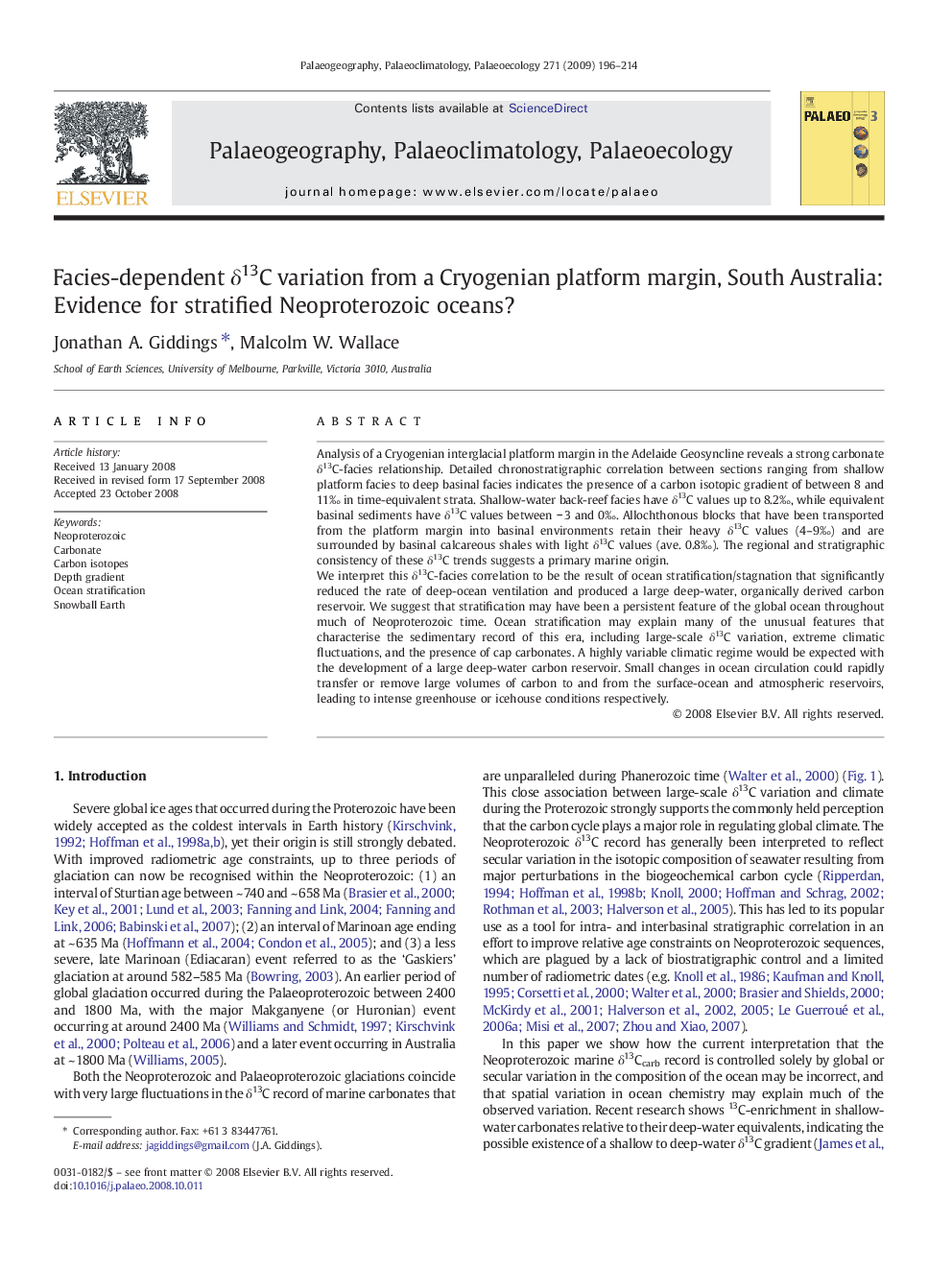| Article ID | Journal | Published Year | Pages | File Type |
|---|---|---|---|---|
| 4468259 | Palaeogeography, Palaeoclimatology, Palaeoecology | 2009 | 19 Pages |
Analysis of a Cryogenian interglacial platform margin in the Adelaide Geosyncline reveals a strong carbonate δ13C-facies relationship. Detailed chronostratigraphic correlation between sections ranging from shallow platform facies to deep basinal facies indicates the presence of a carbon isotopic gradient of between 8 and 11‰ in time-equivalent strata. Shallow-water back-reef facies have δ13C values up to 8.2‰, while equivalent basinal sediments have δ13C values between − 3 and 0‰. Allochthonous blocks that have been transported from the platform margin into basinal environments retain their heavy δ13C values (4–9‰) and are surrounded by basinal calcareous shales with light δ13C values (ave. 0.8‰). The regional and stratigraphic consistency of these δ13C trends suggests a primary marine origin.We interpret this δ13C-facies correlation to be the result of ocean stratification/stagnation that significantly reduced the rate of deep-ocean ventilation and produced a large deep-water, organically derived carbon reservoir. We suggest that stratification may have been a persistent feature of the global ocean throughout much of Neoproterozoic time. Ocean stratification may explain many of the unusual features that characterise the sedimentary record of this era, including large-scale δ13C variation, extreme climatic fluctuations, and the presence of cap carbonates. A highly variable climatic regime would be expected with the development of a large deep-water carbon reservoir. Small changes in ocean circulation could rapidly transfer or remove large volumes of carbon to and from the surface-ocean and atmospheric reservoirs, leading to intense greenhouse or icehouse conditions respectively.
